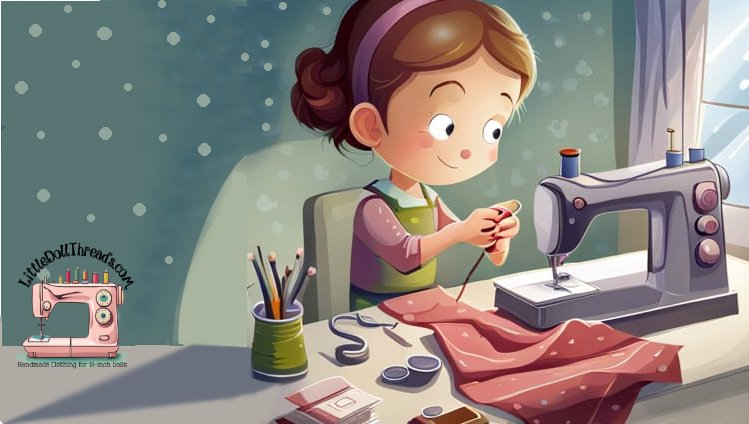Small Scale, Big Precision: Mastering the Art of Sewing Doll Clothes

When it comes to sewing doll clothes, there are several unique aspects to consider compared to regular-sized garments. Let’s explore these aspects in more detail:
Scale: One of the key differences when sewing doll clothes is working with a much smaller scale. 18-inch dolls have significantly smaller proportions compared to human bodies. This means that you’ll need to adjust your patterns and sewing techniques accordingly. The smaller size requires more precision and attention to detail to ensure a proper fit and a polished finished product.
Precision: Sewing doll clothes requires a higher level of precision compared to regular-sized garments. The small scale means that every seam, stitch, and detail is more noticeable. It’s important to sew accurately and with care to achieve neat and professional results. This precision extends to cutting fabric, aligning pattern pieces, and sewing seams with consistent seam allowances. Taking the time to measure accurately and sew precisely will help ensure a well-fitted and visually pleasing end result.
Fabric Selection: Choosing the right fabric for doll clothes is crucial due to the miniature scale. Fabrics that are too thick or bulky can make the clothes appear ill-fitting or disproportionate on the doll. Opt for lightweight fabrics that drape well and are easy to work with. Thin cotton, lightweight knits, and similar fabrics are often suitable for doll clothes. Additionally, consider the scale of prints and patterns on the fabric—smaller prints or solids tend to work better for the small size of doll garments.
Details and Embellishments: Doll clothes offer an opportunity to focus on intricate details and embellishments. Due to the smaller size, you can experiment with decorative elements that might be too overwhelming on full-sized garments. This could include delicate embroidery, pintucks, lace trims, or miniature buttons and fastenings. These details can add charm and personality to the doll’s wardrobe, but it’s important to strike a balance and ensure they are proportionate to the size of the doll.
Playability and Durability: Since doll clothes are often intended for play, it’s important to consider their durability. Reinforce seams, use quality thread, and choose fabrics that can withstand frequent handling. While delicate details are appealing, keep in mind the practicality of the garments. Doll clothes that are well-constructed and durable will allow for extended playtime and enjoyment.
By understanding and embracing these unique aspects of sewing doll clothes, you can create garments that fit well, have impeccable detail, and are suitable for both play and display. Experimenting with different fabrics, mastering precise sewing techniques, and paying attention to scale and proportion will help you achieve impressive results in dressing your 18-inch dolls.

